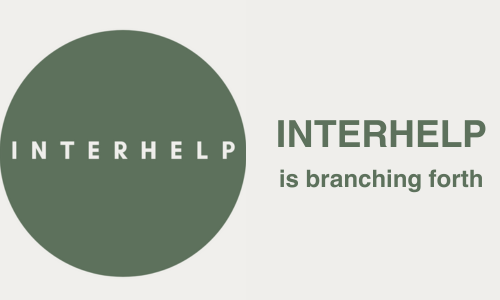Why We Are on a Journey of Anti-racism
by Paula Hendrick
In February 2020, Interhelp Council announced our commitment to anti-racism. This is our formal statement:
We, the Interhelp Council, commit to becoming an anti-racist organization. We will incorporate anti-racism into all aspects of Interhelp, including Interhelp Council, action circles, Interhelp-sponsored events, facilitator training/support, and Work That Reconnects community education. This is a long-term path of learning and action, that will bring change to the organization.
We have received feedback about how white-dominant Interhelp events are, and also on the high impact of that factor, as well as racism in general, in Interhelp spaces – especially on black, indigenous, and people of color.
We have made the choice to act on that feedback and move toward healing, greater safety and inclusion. In addressing racism, we seek to apply the Work That Reconnects as a tool of connection and repair. We see this as being in alignment with the foundational focus of the Work on reconnecting what has been torn apart and needs healing.
While remaining true to certain principles, the Work That Reconnects is always evolving. One area of evolution is how power, privilege and oppression are tended to.
Over the years, I’ve noticed WTR facilitators focusing on environmental destruction more than on human oppression, and even implying that the Great Unraveling has begun only in the past few decades or century. I’ve done this myself, and it parallels a tendency for environmental and climate movements to be “siloed” from movements for social justice. The silos of false separation are starting to dissolve, helped by work such as the principles for a just transition (Climate Justice Alliance).
Racism is a tool of separation and domination that goes hand in hand with the exploitation of the land.
Kurt Kuhwald evokes the urgency of Interhelp’s anti-racism commitment:
“The lack of full inclusion of the perspectives, lived experience and personhood of BIPOC* in any work for justice and transformation results in half-measures and in the end undermines that work. It will, in fact, ultimately support the very powers it wishes to change and replace and/or replicate the systems it aims to change or replace in the long term.” (see White Space: A Letter)
The Really Big Picture
My own understanding of the problems of the Great Unraveling and ways of thinking necessary for the Great Turning have been deeply influenced by Joanna Macy’s teachings about living systems. It’s been a joy rereading my pages of notes from decades of her lectures. Here’s one of her foundational statements:
“It is hard to experience our interrelatedness with all life if we are blind to the human-centeredness embedded in our culture.” [See the updated Coming Back to Life, page 43, “Beyond Anthropocentrism”]
In playing around a bit with wording, I came up with this modification:
“It is hard to experience our interrelatedness with all life if we are blind to the white human centeredness embedded in our culture.”
Or even more to the point:
“It is hard to experience our interrelatedness with all life if we are blind to the dominant WHITE culture that we are all embedded in.”
I say “we are all embedded in” not to erase the extraordinary efforts of many people, indigenous in particular, to live in life-serving ways, but to highlight the pervasive impacts of white supremacist culture. The same mindset that produced and perpetuated western imperialism, genocide of native people, the institution of slavery in “the colonies” / U.S., and the industrial-growth society is still in force.
For me, uncovering this connection between my love of “the really big picture” of how life operates, with the root cause of the crises of this moment and a conceptual framework for solution, helps sustain my efforts.
Work That Reconnects and “White Space”
Patterns of oppression are not unique to the Work That Reconnects or to the U.S., but are a function of dominant culture operating in each one of us. Systems of oppression are thoroughly embedded in dominant culture, which replicate in movement and workshop spaces. When each of us physically enters a workshop space, we bring these embedded systems and patterns with us unwittingly – including racism, sexism, classism, and ableism (just to name a few).
Right now Interhelp Council members are taking a deeper dive into how racism operates in Work That Reconnects spaces. We are building on the work described in this special issue of the international Deep Times Journal and continued by the Evolving Edge working group.
Until very recently, relatively few BIPOC have been involved in WTR, whether as developers, facilitators or participants. (Learn the history of the Work here.) For that reason, I’ve been exploring the concept of “white space” or “white spaces.” Popular use of that term began with Elijah Anderson, who calls “the white space” an environment in which blacks are “typically absent, not expected, or marginalized.” The “centering” of whiteness that occurs in these spaces is a dimension of white supremacy, a system that insures that power and privilege remain ultimately in white hands.
The social norms of white space are often not obvious to the white people in a workshop group, but for BIPOC attendees the norms and structure are very clear and often unsafe. Indeed, one aspect of privilege is not feeling a need to be aware of how one’s privilege perpetuates the oppression of others.
Next Steps
Interhelp began exploring oppression issues a couple of years ago, as you can see on our website. I hope I’ve given enough context to demonstrate why we have committed to deepening our anti-racism efforts in particular. For a deeper understanding, please read the entire piece by Kurt Kuhwald referenced above. I look forward to updating you as we make our way along this journey, and Interhelp Council members look forward to engaging with you in the process over time.
*Black, Indigenous and People of Color
